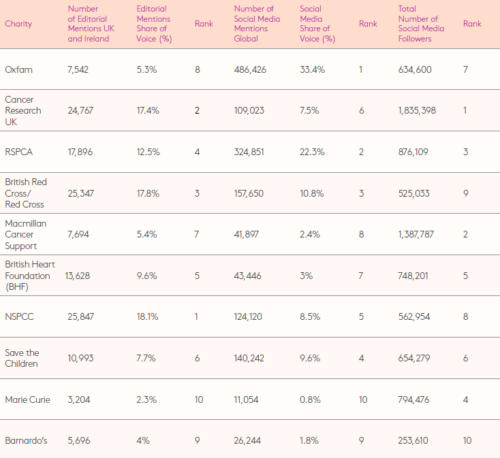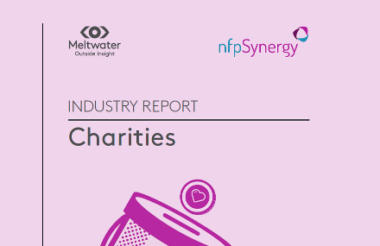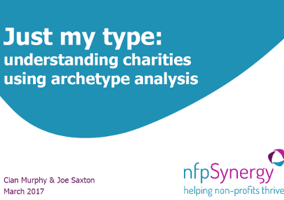A new report based on data from the top 10 charities in the UK shows that a high spend on advertising “doesn’t guarantee” increased editorial coverage or social media engagement.
Industry Report: Charities, published by media monitoring organisation Meltwater and think tank nfpSynergy, analysed online, print and social media coverage data for the UK’s top 10 charities from 1 July 2016 to 1 July 2017. The 10 charities have been taken from nfpSynergy’s research into brand awareness.
The report showed that the NSPCC was the most covered UK charity in the national newspaper press between January and July of this year, with 25,847 articles being published about it in the UK and Ireland.
The next two most covered charities were the British Red Cross and Cancer Research UK, with 25,347 articles and 24,767 articles respectively.
The report showed that Macmillan Cancer Support spent the most on advertising - over £32m in the last 12 months - and yet was mentioned by UK national newspaper less than 8,000 times in that time period and also attracted only 41,879 social media mentions – making it one of the weakest of the top 10 charities in both metrics.
Macmillan Cancer Support also spent the most money of any of the top 10 charities on digital advertising, yet was ranked 8 out of 10 for social media mentions in the last 12 months. Meltwater’s report said this could be a result of “many internet users having ‘ad blocking’ software”.

National newspapers ‘disinterested’ in global charities
The report found that Oxfam was mentioned by global news agencies far more often than it was by UK-based, national news organisations. Between 1 January and 1 July 2017, over 65,000 articles were written about Oxfam globally, compared to just 7,542 in the UK and Ireland.
Save the Children, another international aid organisation, saw similar discrepancies between global and national media coverage. STC was written about over 52,000 times globally, but just 10,993 articles were written about it in the UK and Ireland.
The report said that STC had only 8 per cent “share of voice” in the UK and Ireland, while Oxfam had only 5 per cent, among the ten top charities, yet between them they had a combined global share of over 67 per cent.
Meltwater suggested this was because “the British and Irish media and public take more of an interest in local charities”.
Most journalists think ‘critical stories’ will continue
Drawing on nfpSynergy’s Journalist’s Attitudes and Awareness Monitor report, last updated in May, Meltwater said that over 80 per cent of journalists believe “the level of critical stories about charities will increase or stay the same over the coming year”.
A further 65 per cent of the 150 journalists surveyed said they would “cover a charity scandal or controversy” in their newspaper or online.
Despite this, the report showed that the number of negative stories about charity fundraising published by the press since 1 July 2015 to now has “considerably died down” by as much as 84 per cent.
Meltwater said this could “indicate that charities have dealt with” issues around perception of fundraising “enough not to warrant more coverage”. However, it did also suggest that “charities have been pushed out of the headlines by a year of long-running political dramas” and that there was “never much chance of a ‘silly season’ in 2016” following the Brexit vote.
The report also predicted that negative media coverage could flare up again in future with regards to upcoming GDPR. “It’s inevitable that at least one charity will slip up at some point,” with data protection said the report “and when the first fines roll in, they will make headlines in national newspapers, perhaps bringing other charities into the limelight with them”.
Related Articles












